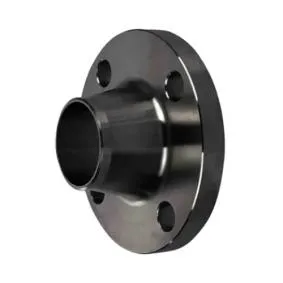-
Cangzhou Yulong Steel Co., Ltd.
-
Phone:
+86 13303177267 -
Email:
admin@ylsteelfittings.com
- English
- Arabic
- Italian
- Spanish
- Portuguese
- German
- kazakh
- Persian
- Greek
- French
- Russian
- Polish
- Thai
- Indonesian
- Vietnamese
- Zulu
- Korean
- Uzbek
- Hindi
- Serbian
- Malay
- Ukrainian
- Gujarati
- Haitian Creole
- hausa
- hawaiian
- Hebrew
- Miao
- Hungarian
- Icelandic
- igbo
- irish
- Japanese
- Javanese
- Kannada
- Khmer
- Rwandese
- Afrikaans
- Albanian
- Amharic
- Armenian
- Azerbaijani
- Basque
- Belarusian
- Bengali
- Bosnian
- Bulgarian
- Catalan
- Cebuano
- China
- China (Taiwan)
- Corsican
- Croatian
- Czech
- Danish
- Esperanto
- Estonian
- Finnish
- Frisian
- Galician
- Georgian
- Kurdish
- Kyrgyz
- Lao
- Latin
- Latvian
- Lithuanian
- Luxembourgish
- Macedonian
- Malgashi
- Malayalam
- Maltese
- Maori
- Marathi
- Mongolian
- Myanmar
- Nepali
- Norwegian
- Norwegian
- Occitan
- Pashto
- Dutch
- Punjabi
- Romanian
- Samoan
- Scottish Gaelic
- Sesotho
- Shona
- Sindhi
- Sinhala
- Slovak
- Slovenian
- Somali
- Sundanese
- Swahili
- Swedish
- Tagalog
- Tajik
- Tamil
- Tatar
- Telugu
- Turkish
- Turkmen
- Urdu
- Uighur
- Welsh
- Bantu
- Yiddish
- Yoruba

Oct . 10, 2024 04:29 Back to list
blank flange plate
Understanding Blank Flange Plates An Essential Component in Industrial Applications
Blank flange plates are fundamental components in various engineering and industrial applications, serving as a critical part of piping and structural systems. Typically made from metals such as carbon steel, stainless steel, or alloy materials, these plates play a crucial role in ensuring the integrity and functionality of mechanical systems. This article aims to explore the significance, applications, design aspects, and advantages of blank flange plates.
What is a Blank Flange Plate?
A blank flange plate, often referred to simply as a blank flange, is a flat disc-shaped component with a hole in the middle that is used to cover the end of a pipe or a fitting. Unlike standard flanges, which often feature bolt holes around their circumference for joining two components, blank flanges are designed to create a sealed end. They can be used in systems where a pipe needs to be sealed off without the need for further attachments or connections.
Applications of Blank Flange Plates
The primary application of blank flange plates is in piping systems where it is necessary to isolate sections of the pipeline. This could be due to maintenance, inspection, or system modifications. Industries such as oil and gas, water treatment, chemical processing, and pharmaceuticals frequently utilize blank flanges. Their ability to create a leak-proof seal makes them indispensable in situations where the containment of fluids or gases is critical.
In addition to isolation, blank flange plates can be used in pressure testing where a section of pipe needs to be securely sealed to assess the integrity of the system. Another application is in the construction of equipment where blank flanges can serve as closures for access points or to provide structural support.
Design Aspects of Blank Flange Plates
The design of blank flange plates is governed by specific industry standards and codes, ensuring that they can withstand various pressures and temperatures associated with fluid transport
. Selecting the right design involves considering several factors such as1. Material The choice of material depends on the application environment. For instance, stainless steel is often used in corrosive environments, while carbon steel is suitable for less aggressive settings.
2. Thickness The thickness of the flange plate must be sufficient to withstand the pressure in the application. Thicker plates can handle higher pressures but also add weight and cost.
blank flange plate

3. Size Blank flanges are available in various sizes to accommodate different pipe diameters. The matching of the flange to the pipe is crucial for creating a proper seal.
4. Sealing Method The edge design may involve surface finishes or grooves that facilitate effective sealing when mated with gaskets or other sealing elements.
Advantages of Using Blank Flange Plates
1. Ease of Use Installing a blank flange plate is straightforward, requiring minimal tools and resources. This simplicity reduces labor costs and installation time.
2. Cost-Effectiveness Compared to more complex flange types, blank flanges are generally less expensive, making them a budget-friendly choice for many applications.
3. Versatility Due to their design, blank flange plates can be custom manufactured to meet specific requirements, providing flexibility in various installations.
4. Safety Utilizing blank flange plates ensures a secure and leak-tight seal, contributing to the overall safety of the system by preventing the accidental release of hazardous materials.
5. Maintenance Isolating sections of piping using blank flanges allows for easier maintenance and inspection, improving the lifespan of the overall system.
Conclusion
In conclusion, blank flange plates are a vital component in various industrial applications. Their ability to provide a reliable, leak-proof seal makes them essential in ensuring the safety and efficiency of piping systems. As industries continue to evolve and adapt to new challenges, the importance of high-quality blank flange plates remains unwavering. Understanding their design, applications, and advantages ensures that engineers and maintenance personnel can make informed decisions, ultimately leading to more efficient and safe industrial operations.
Latest news
-
ANSI 150P SS304 SO FLANGE
NewsFeb.14,2025
-
ASTM A333GR6 STEEL PIPE
NewsJan.20,2025
-
ANSI B16.5 WELDING NECK FLANGE
NewsJan.15,2026
-
ANSI B16.5 SLIP-ON FLANGE
NewsApr.19,2024
-
SABS 1123 FLANGE
NewsJan.15,2025
-
DIN86044 PLATE FLANGE
NewsApr.19,2024
-
DIN2527 BLIND FLANGE
NewsApr.12,2024
-
JIS B2311 Butt-Welding Fittings LR/SR 45°/90° /180°Seamless/Weld
NewsApr.23,2024











